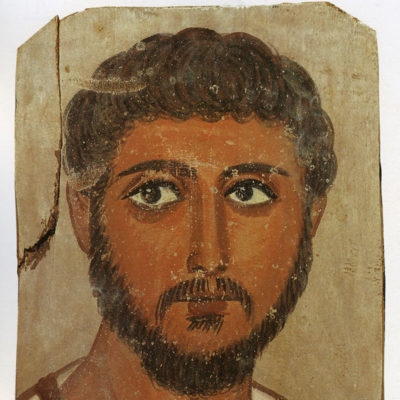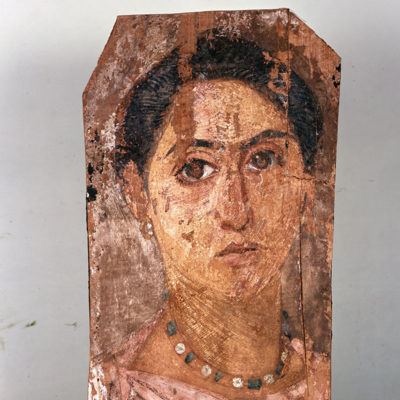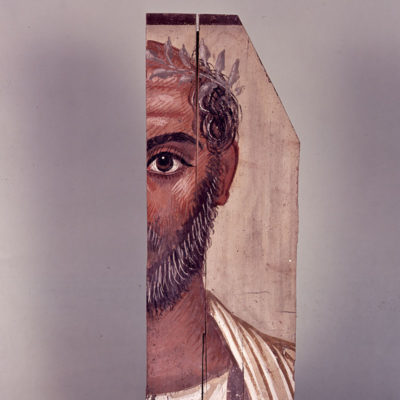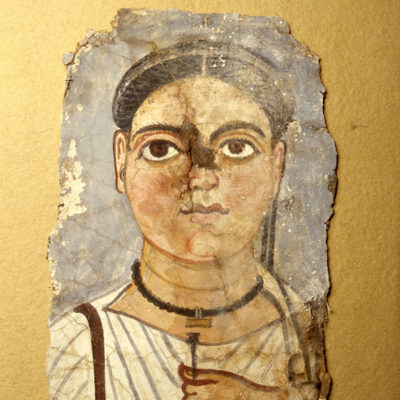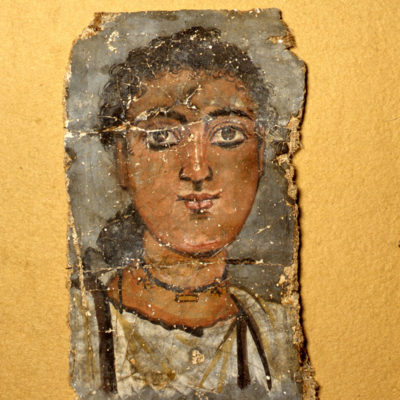Fayum portraits
The first portraits of this type were found in the Fayum oasis, 60 km outside of Cairo, on the west bank of the Nile. They were discovered by the Italian traveler Pietro della Valle in 1615 during his journeys in Asia and Africa. More than 1000 Fayum exist today all over the world. Even though they have been found all across Egypt, the term Fayum prevailed in the history of art since the majority of them comes from this specific region.
The Fayum are realistic painted mummy portraits of men, women and children, of all ages from Roman Egypt, between the 1st and 3rd centuries A.D., possibly the 4th c. AD., and they were placed mainly over the face (a few full-length ones are also preserved). They are unique, life-like works, full of emotions, vitality and expressiveness, like photographic portraits of the dead, which were created in a cosmopolitan society, a crossroads of cultures and a “melting pot” of religious traditions.
Even though they are stylistically associated to the Greco-Roman painting tradition, they actually serve the Egyptian burial customs. Painted by nature, on a thin panel of wood or linen cloth with two different Greek painting techniques, encaustic or tempera, they ascribe the portrayed with a shocking naturalism that literally “captures” someone’s gaze. Their use is, so to speak, dual since on the one hand they keep alive the image of the deceased due to their incredible realism and promptness but at the same time they are part of the magical funerary equipment of the mummies of Roman Egypt, since the portrait helped the Ka (vital force created at birth and released at death) and the Ba (personality or soul) of the deceased to recognize his physical body after death and reunite with him in eternal life.
The Egyptian Collection of the National Archaeological Museum hosts five masterfully executed Fayum portraits, displayed in the showcase 20 of the Room 40. They make part of Ioannis Demetriou donation, in 1880, however we ignore the exact area of Egypt they came from.


